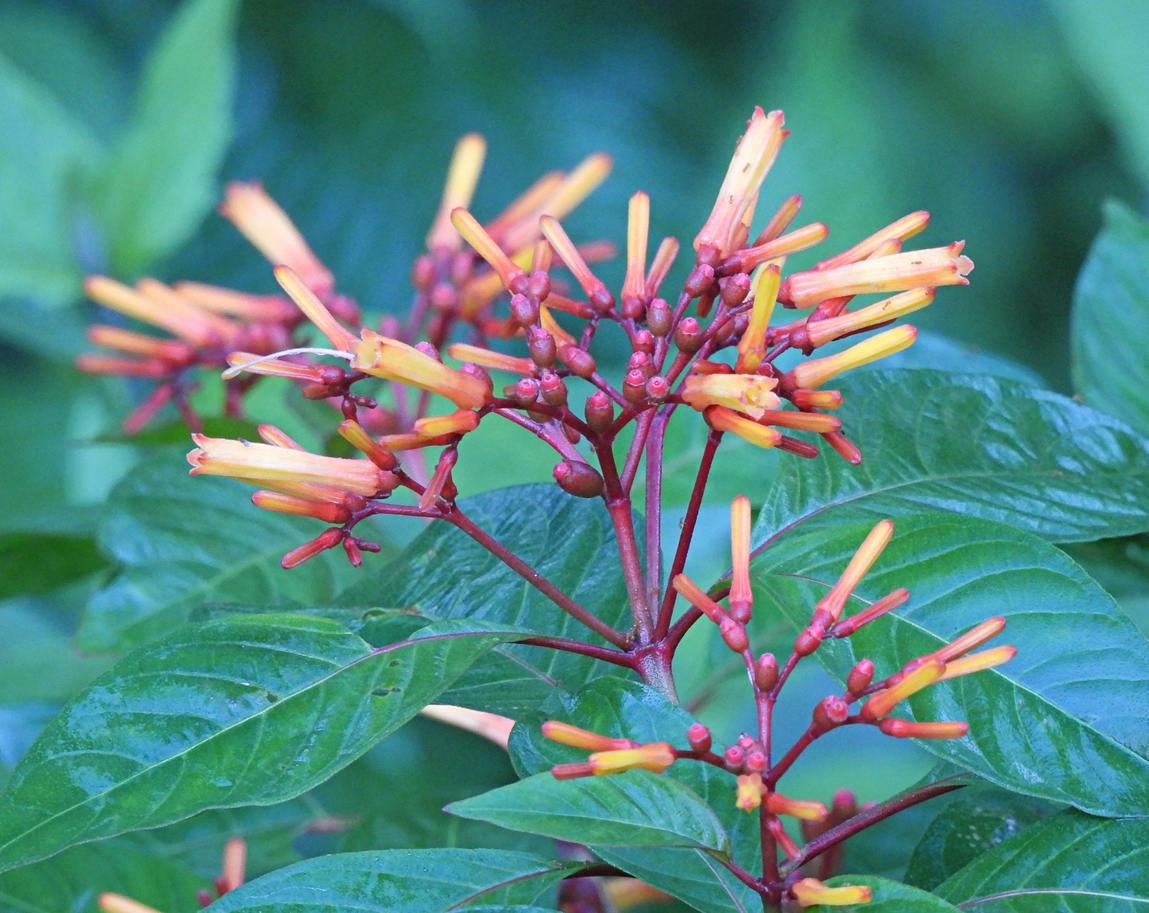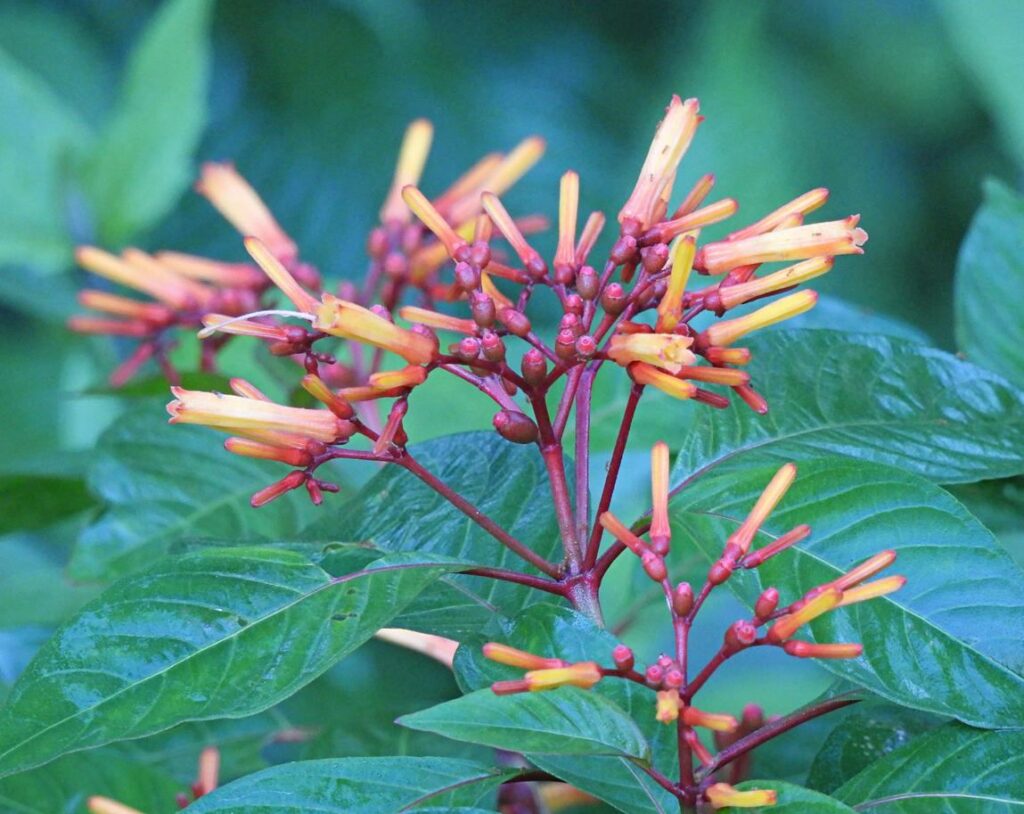Firebush Care – How To Grow And Care For Hamelia Firebush Plants
If hummingbirds or butterflies visiting your garden make your day, then you couldn’t find a better plant to attract them than the Hamelia firebush. It’s not just that flowers offer a delicious meal for both, but all these clusters of tubular-shaped flowers in their scarlet, red, and orange explosions are just too hard to miss.
But it’s not just butterflies and birds that love the firebush. In your garden, it offers plenty of landscaping opportunities and transforms a drab corner into a lush and breathtaking visual spectacle of colors and textures. So let’s get to know this exotic plant a little more and learn how to grow and care for it in the garden.
Hamelia Firebush at a Glance
The firebush (Hamelia patens) is a perennial shrub that also comes in the form of a small tree. As a native of the tropics and subtropics, it is best suited for the southern parts of the country from the tip of Florida all the way to Southern California. It is known by many names in different countries and regions. From the firecracker shrub to the scarlet bus and redhead. In Belize, it got the nickname, the guardian of the forest.
The shrubs and small tree varieties are hardy plants that have a high tolerance for drought, different soil types, and varying degrees of sunlight and partial shade. They often grow to 5 to 10 feet in the right conditions. The flowers are the most striking features of this plant and vary in color from the deep scarlet to the reddish-orange. They have a peculiar tubular shape as well which suits the long thin peaks of the hummingbirds.
The pointed leaves are deep green with pink veins crisscrossing them. Each leaf grows up to 6 inches long. In the fall, the leaves turn red just like the stalks. The nectar and pollen are great attractions to monarch butterflies and hummingbirds which are the two major pollinators of the firebush. Once they’re pollinated, the flowers fade and are replaced with fruits. Each shrub or tree will carry a combination of flowers and berries in various stages of development.
The fruits of the firebush are the icing on the cake. They are small berries that have even smaller seeds. They start as dark red but become black when fully ripe. While the fruits are not the main reason many gardeners grow firebush shrubs and trees in their garden, they’re nonetheless juicy, packed with nutritions, and sweet.
How to Grow Firebush
If you have been to Florida, you no doubt have seen an abundance of firebush plants not just in gardens but nurseries as well. These hardy plants have adapted very well to the weather conditions in the state. That’s good news because it means, you too can grow the firebush in your garden with a high chance of success. Here is the lowdown of the necessary steps you need to take.
- With a USDA hardiness zone between 8 and 11, the best time to plant the firebush is in the late spring and early summer.
- Make sure you have enough space for each individual plant both horizontally and vertically. Keep in mind that the plant needs between 8 and 12 feet of space.
- You can plant them in just about any soil, whether acidic or alkaline, as long as it’s well-drained and moist.
- Keep a distance of 6 feet between each plant and the nearest wall should be about 4 feet away.
- Firebush plants are also easy to grow in a container as long as it’s large enough to contain their robust root systems.
- Cover the soil with peat moss or other organic matter to improve water retention and aeration.
- Choose a location that gets full sun. However, it wouldn’t mind partial shade as long as it gets sunlight during the day.
- Make sure you don’t get strong winds. You can plant the shrub near a fence to protect the flowers and berries against the wind.
- Once the roots take hold, you won’t have to irrigate the plant so often. Its high tolerance for drought is exemplary.
- Once the fall is over, cover the roots of the shrub with mulch to protect it against the cold weather.
Hamelia Firebush Care
You’re probably wondering how you’d take care of a plant that turns fully red from stalk to leaves and flowers and attracts birds and butterflies like a magnet. Well, even with little horticultural experience, you can still pull it off and enjoy this perennial plant all year round.
Temperature and Light
The high USDA hardiness zones mean this tropical and subtropical shrub needs high levels of temperature and humidity. So if you want to see an abundance of flashy flowers and even sweeter berries, make sure the temperature is between 85 and 100 degrees Fahrenheit. That’s how hot the firebush loves it.
While the full sun is not a crucial element for the growth of the firebush plant, it really makes a huge difference in the quality of the flowers and berries when it gets at least a few hours of direct sunlight every day. That said, it will grow well in partial shade. Just make sure it does get some sunlight either directly or indirectly.
Water
In general, your firebush won’t require a lot of watering. Once it establishes, it becomes almost self-sufficient as its roots seek water in the deep soil. That doesn’t mean you should forget about irrigation altogether. You should always strive to keep the well-drained soil moist especially in the dog days of summer. Don’t overwater it, however. This is a hardy bush that can handle drought but not soaked soil. You can use a well-balanced fertilizer in the early spring to encourage flowering.
Transplanting
Because of the robust root system that firebush plants are known for, you would need to transplant them every couple of years. This only applies to firebushes that grow in containers. I can’t stress this enough. But no matter how large the container, you’d still have to transplant the firebush to an even larger one. Its root system doesn’t do well in crowded spaces and that could affect the flowering and fruit production. The first sign that the bush or small tree needs transplanting is when the leaves turn yellow and the flowers droop.
Disease and Pests
Like most other plants that grow in the tropics, the firebush is known to attract some undesirable guests. These usually include your common garden variety of aphids, thrips, spider mites, plant scale, whiteflies, and mealybugs. Each one of those is enough to cause a lot of damage to your beautiful firebush. You can use either a pesticide or organic neem oil to get rid of them.
As for diseases, there are three infections that hit this shrub around the height of summer. These are:
- Gray mold: a disease caused by a fungal infection that leaves a powdery-like residue on the leaves. Sometimes you’ll see it on the stalks too. It’s better to get rid of the leaves or branches that show the symptoms.
- Root rot: the cause of this problem is often man-made. If you water the plant too much or don’t have well-drained soil, the waterlogging causes the roots to rot. Symptoms include leaves with brown tips and wobbly stalks. Stop watering the soil until the top 2 inches of soil become dry.
- Powdery mildew: another fungal infection that leaves its spots on the leaves in the form of powder. You can treat it with neem oil or remove all infected leaves. A fungicide could be a good solution if the infection is spreading. If there are berries on the plant, don’t consume them.
Landscaping Ideas with Hamelia Firebush Plants
To say that the Hamelia firebush is an all-round plant that is a delight to have in your garden is an understatement. We feel that we can’t give this wondrous plant its fair dues. And so far we have been talking about the splendid flowers and juicy berries. But, the truth is, this is first and foremost a landscaping plant. Those red stalks and equally scarlet leaves stand out in your garden like a fiery bush.
Some examples of landscaping use for the firebush plants include
- A magnet for a butterfly garden. The monarch butterflies will travel for miles in search of their favorite firebush flowers.
- As a backdrop. The bright flowers and flashy leaves of the firebush serve as the ideal backdrop for low plants.
- Around a hedge to give it an informal and less austere feeling.
- A focal point in your yard. You couldn’t find a better alternative for a stand-alone plant that offers all the delights of trees and flowering plants at the same time.
- To accentuate a walkway, pool, patio, deck, or lanai. Since it requires less maintenance and care, you won’t have to worry about pruning or deadheading it.
- Add some color to a fence or a drab wall and transform your landscape with unlimited designs and floral creations.

